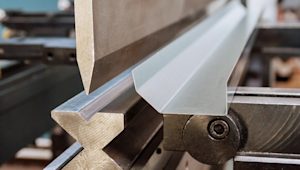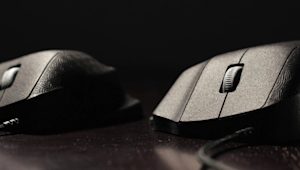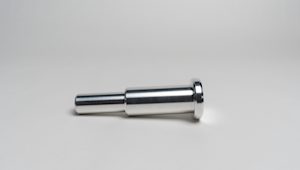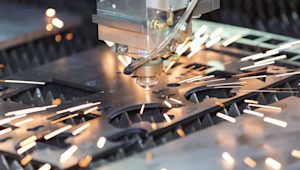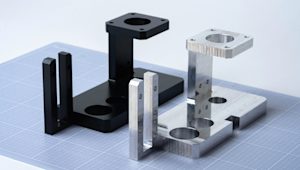The prototyping phase of part design is as crucial as it is tricky. Go through it too quickly, and you risk ending up with a finished product that does not perform as required or expected. However, if you spend too long perfecting your prototype, you may run into costly delays that eat away at your budget.
In this article, we’ll take a look at seven of the most common pitfalls that our customers experience while prototyping, as well as provide you with useful tips on measures you can take to ensure that you can transition into full-on production as seamlessly as possible.
First, however, we’ll start with a brief overview of prototypes themselves, offering several examples of what you can use them to achieve.
What is a prototype?
A prototype is an early version of a part or product you can use to evaluate and refine ideas before moving into production. Depending on your final part’s application, prototype are often used for one of the following:
-
Proof of concept. Demonstrating that a part is feasible and can be manufactured.
-
Functionality testing. Will your part or product perform as intended?
-
User experience evaluation. Assessing how your part or product will be used, allowing you to identify potential issues before they arise.
-
Cost reduction. By identifying design flaws or inefficiencies before full-scale production, you can take steps to minimize costs.
-
Market validation. Gauging interest and collecting feedback from potential customers to determine market demand for a product.

Common pitfalls for prototyped products
In the following sections, we’ve identified seven of the top issues our customers face after creating a prototyped part or product. We’ll also offer suggestions for how you can avoid these issues, so you can enjoy the smoothest prototyping phase – and overall production process – possible.
Poorly defined goals
Without clear goals and objectives for your prototype, it's easy to lose focus and end up with a part or product that doesn't effectively address the problem or fulfill the intended purpose.
You should work to clearly define the goal of both your finished part and the prototype itself. The part’s overall purpose will allow you to efficiently plan for the entire production process, while discerning the prototype’s purpose will help you create a prototype that gives you the clearest picture of a potential end product.
Here are a few questions to ask yourself as you begin the prototyping phase:
-
What problem does the part/product aim to solve?:
-
Who is the target audience or end-user?
-
What are the performance requirements and specifications?
-
What are the constraints and limitations?
-
What are the desired outcomes or objectives for the prototype? Will you be validating a specific design concept, testing functionality, or gathering user feedback?
-
How will you measure success (i.e. usability metrics, performance benchmarks, or stakeholder satisfaction)?
Over-engineering
Prototyping can sometimes lead to overcomplicated solutions. For example you might get carried away with the technical aspects, or focus too much on aesthetics, diverting attention that would be better paid to your product’s practicality or functionality. The opposite could also hold true, if the goal of your prototype serves an aesthetic purpose.
A good rule of thumb here is to design a prototype with simplicity in mind: if a feature isn’t absolutely necessary, don’t include it in your prototype. With this in mind, aim to design and create a prototype that:
-
Prioritizes the features you need to evaluate and iterate on
-
Has a manageable scope, allowing you to avoid over-complexity
-
Balances aesthetics and functionality, but never forsakes usability
Skipping validation
A lot of assumptions go into the creating of a prototype. You may think it will solve a problem, or that there will be a strong demand for the final product once it hits the market. This is why validation is so important.
Validation reduces potential risks in creating a new product by helping you be sure that you are investing your resources wisely – and that your final product has a genuine chacne of success. Skipping validation, on the other hand, can be a costly mistake, from both a time and financial standpoint.
Proper validation may include user feedback, which we will touch on below, but is also broader in nature, encompassing:
-
Market research
-
Competitor analyses
-
Feasibility studies
Lack of user feedback
Failing to gather and incorporate feedback from potential users early in the prototyping process can result in building a product that doesn't meet their needs or expectations.
Remember that a prototype is supposed to provide you with a clear idea whether your product’s design is feasible. Without the input of those who will eventually use your product – whether they are consumers you want to purchase your product or mechanics who will use a part or tool you are developing on the shop floor – you risk misalignment with their needs and expectations.
To ensure that you are satisfactorily integrating user feedback into your prototype, consider:
-
User surveys or interviews
-
Prototype testing with target users
-
Integrating feedback into design iterations
Failure to iterate
Prototyping is an iterative process. Failing to properly iterate so can result in a product that falls short of its potential, as you will miss opportunities for improvement.
This means you should expect to go back to the drawing board and create a new prototype after your first attempt, even if that first attempt yielded a viable product. This does not denote a failure on your part, but a commitment to a final product that is as effective and efficient as possible.
That said, you should also aim to iterate as rapidly as possible, so you don’t spend too long in the prototyping phase – thus causing delays to overall production. A few tips for rapidly iteration include:
-
Implementing agile development methodologies
-
Encouraging cross-functional collaboration from various team members or departments
-
Including time for prototype iterations into your overall production timeline.
Ignoring scalability
“Scalability” refers to a part’s or product’s ability to be manufactured at increased volumes without sacrificing quality, resulting in disproportionate cost increases, or running into production difficulties.
When prototyping, it’s important to consider how your final product will perform when scaled up. Ignoring scalability issues during prototyping can lead to significant problems down the line, and result in parts that are inordinately expensive or time-consuming to manufacture – or completely unviable.
To avoid this, consider the following scalability-related issues when creating a prototype:
-
Use DFM principles to design parts that are as easy to manufacture as possible
-
Design with modularity and standardization in mind
-
Evaluate supplier capabilities and production capacity to ensure they can scale alongside you

To get an instant quote for any type of custom part or prototype, upload a CAD file. If you have a special request, contact networksales@protolabs.com for personalized advice.
Frequently asked questions
Why are prototypes important?
Prototypes validate ideas and allow you to gather feedback, increasing your chances of a successful final product.
How do prototypes boost your ability to innovate?
They allow for experimentation, iteration, and refinement, so you can capitalize on opportunities to create the best product possible.
What's the danger of focusing solely on aesthetics in a prototype?
You may miss opportunities to validate or test your product’s functionality.
How can prototypes inform design decisions?
Through iterative testing and refinement.









